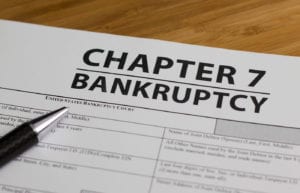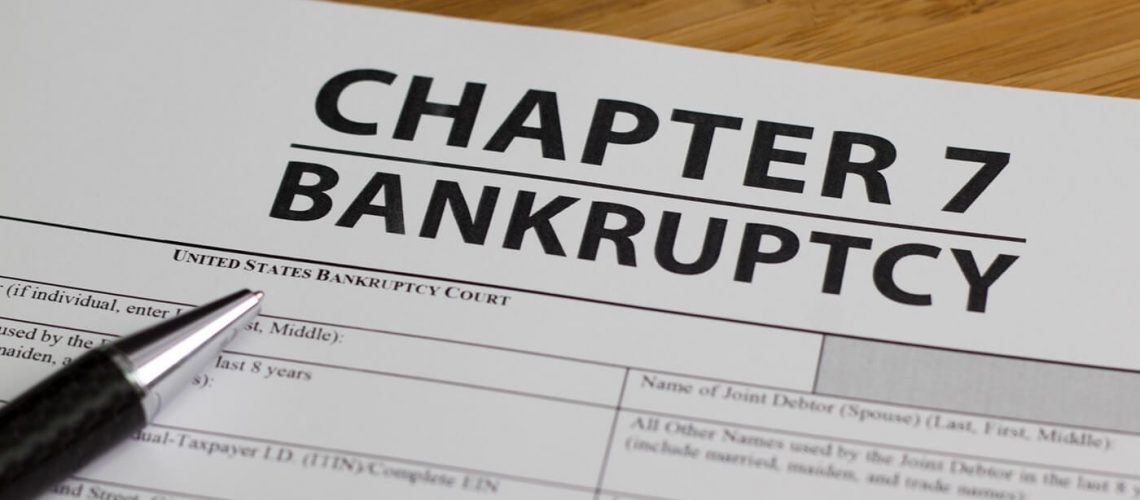As the stress related to excessive debt mounts, there is a need for the debtor to start looking for solutions. After looking at other possibilities like debt consolidation or debt settlement, the number of options diminishes very quickly. At the end of the line is bankruptcy and other cost of bankruptcy in Iowa.
For individuals in Iowa, there are two bankruptcy options: Chapter 7 and Chapter 13. While each option delivers different results in terms of what happens to the individual’s assets, the ultimate penalty is the same. In both cases, the individual’s credit will sustain significant damage for up to 10 years. Also, both options should be handled by an experienced Chapter 7 bankruptcy attorney Cedar Rapids Iowa.
Let’s take a look at these two options and in the end the cost of bankruptcy in Iowa..
Chapter 7 Bankruptcy
Chapter 7 bankruptcy is also referred to as a straight liquidation process. If the bankruptcy is discharged, it will most likely result in the petitioner losing some of their assets alongside other cost of the bankruptcy in Iowa.

After filing for Iowa Chapter 7 bankruptcy protection, a stay is placed by the court on the collection of the petitioner’s debt. During this time, foreclosures, debt collection attempts, and wage garnishments are put on temporary hold while the court’s representative (bankruptcy trustee) assesses the case.
If the judge agrees to discharge the bankruptcy, they effectively are approving it. At that time, nonexempt assets would be sold to satisfy creditors as much as possible. All other qualified debts would be discharged.
Exempt assets do include the primary residence (net value less than $25K) and the family vehicle (less than 4K net value) as long as it doesn’t qualify as an expensive luxury vehicle.
Chapter 13 Bankruptcy
To qualify for Chapter 13 bankruptcy (the working man’s bankruptcy), the petitioner can have no more than $419,275 in unsecured debt (credit cards) and $1,257,850 in secured debts (mortgages and car). They must also meet minimum income requirements based on the state within which they live.
Chapter 13 bankruptcy revolves around the petitioner’s desire to simply reorganize their debt and repay it over three to five years as approved by the bankruptcy trustee. The court will designate debts the petitioner must pay as part of a payment plan.
Upon filing for Chapter 13 protection, the petitioner must supply the trustee with the following information:
- List of creditors and amounts owed
- All sources of income
- List of all owned real estate properties
- Breakdown of living expenses
- Recent tax returns
After assessing the petitioner’s ability to abide by the terms of a bankruptcy 13 payment plan, the trustee will make a recommendation to the court. If the court approves the petition, a payment plan will be put in place by the trustee. Should the petitioner fail to live up to the terms of the plan, the court could then move to claim some of the petitioner’s assets to settle debts. Should the petitioner meet their obligation, some debts could be discharged by the court.
The Differences and Similarities Between Chapter 7 Bankruptcy and Chapter 13 Bankruptcy
After laying out a description of both Iowa Chapter 7 bankruptcy and Iowa Chapter 13 bankruptcy, we can now focus on the differences and similarities besides the cost of bankruptcy in Iowa.
As for the differences:
1. Chapter 7 could result in the loss of assets while assets are generally protected with Chapter 13.
2. Chapter 7 will result in the complete discharge of qualified debts while the petitioner must pay all designated debts as part of a Chapter 13 payment plan. Should the petitioner fulfill their Chapter 13 obligation on time, some debts could be discharged at the court’s discretion.
3. The court costs related to Chapter 13 are a bit higher due to the ongoing administration of the court overseeing the petitioner’s payment obligations. For the most part, attorney fees will be higher for Chapter 13 due to the probability of more court appearances.
As for similarities:
1. Both options require qualifying based on financial information
2. Both options will result in damage to the petitioner’s credit score for up to 10 years.
3. In both cases, the hiring of an experienced bankruptcy lawyer Cedar Rapids Iowa is highly recommended. With so much at risk in terms of financial stability in the future, it is simply not a good idea for someone to attempt to handle either bankruptcy process on their own.
Besides the differences we need to take in consideration the cost of bankruptcy in Iowa.
The Cost of Bankruptcy in Iowa
It is worth noting that bankruptcy costs can vary from state to state due in large part to the fees attorneys charge. For the most part, court filing fees should be about the same.
In Iowa, the filing fees for both Chapter 7 and Chapter 13 will run a little over $300. Note: Chapter 13 filing fees must be paid with the petition. Chapter 7 fees can be deferred for possible waiving.
Attorney fees for Chapter 7 should run between $1,500 and $3,000 while Chapter 13 attorney fees should run between $3,000 and $4,000.
My name is John Heckel, and I am a top Chapter 7 bankruptcy Attorney Cedar Rapids Iowa option. With over 46 years of legal experience, I have successfully helped over 1,000 clients with their bankruptcy filings. As a top bankruptcy lawyer Cedar Rapids Iowa option, I will help you select the best bankruptcy option and see you through the entire process. For a consultation, please contact me at your convenience..


